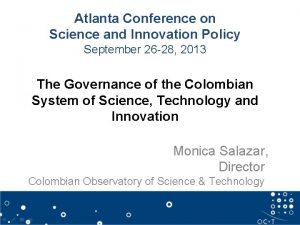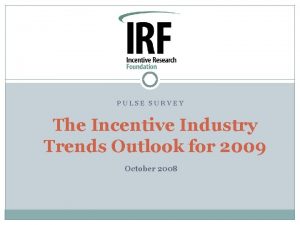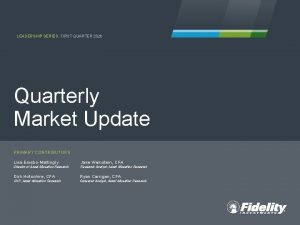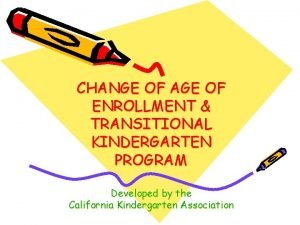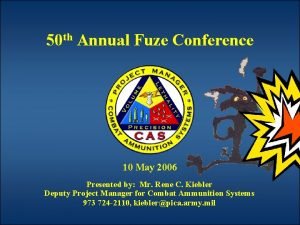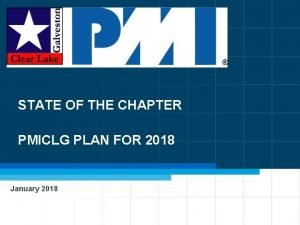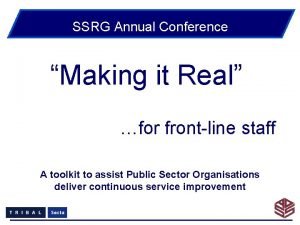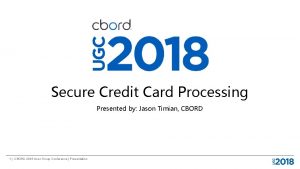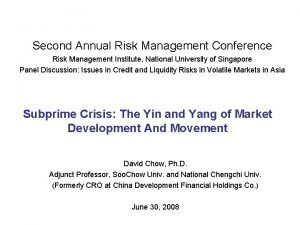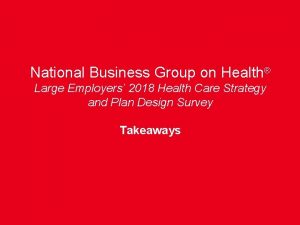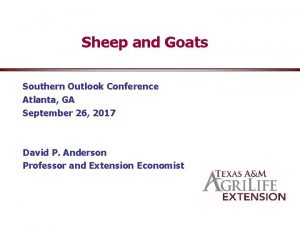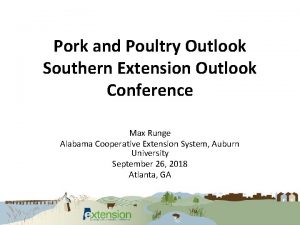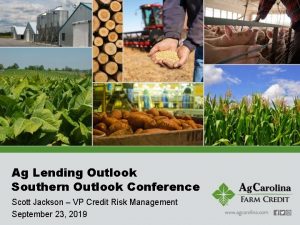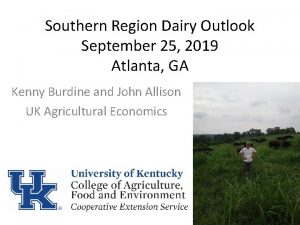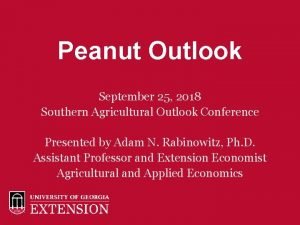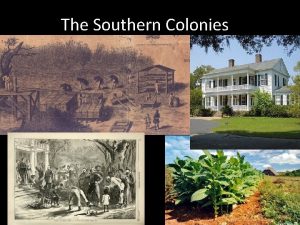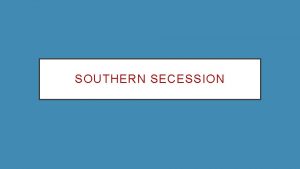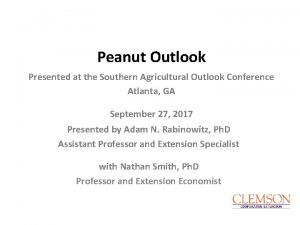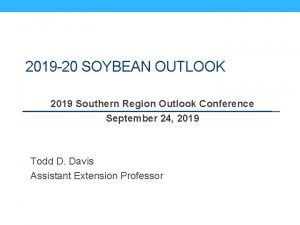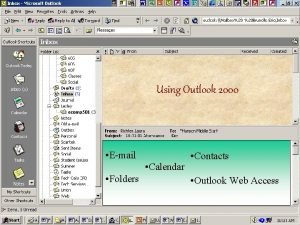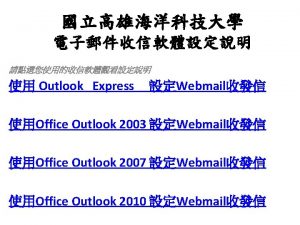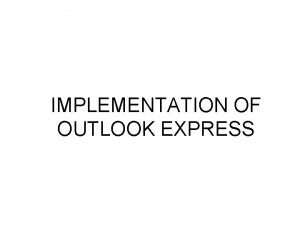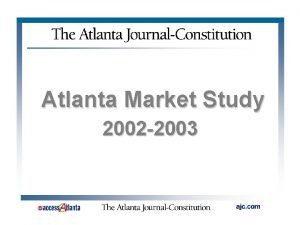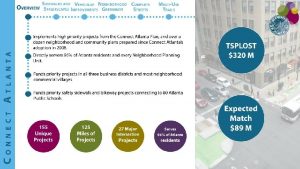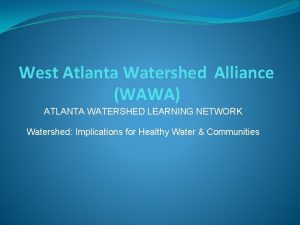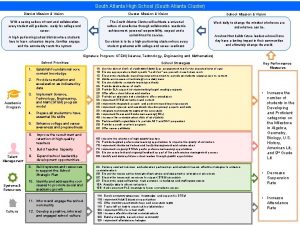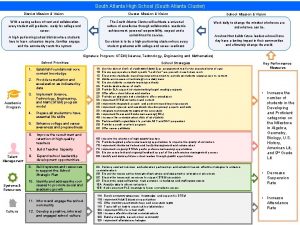SRMEC Program Update 2018 Southern Outlook Conference Atlanta






















- Slides: 22

SRMEC Program Update 2018 Southern Outlook Conference Atlanta, Georgia Ronald Rainey Director Southern Risk Management Education Center University of Arkansas Website: http: //srmec. uaex. edu/ Email: srmec@uaex. edu

http: //extensionrme. org

http: //srmec. uaex. edu


SRMEC RFA • RFA Released: SRMEC RFA was released on Monday, Sept. 17 th. • Proposals due Nov. 15 th, 2018 5: 00 p. m. CST – Educational Project (18 -month project), maximum award $50, 000. Traditional educational outreach project that educates producers in managing risks. – Exploratory project, capped at $5, 000: This category supports small exploratory project awards for up to $5, 000 for planning, development, or piloting efforts. • Performance Period: April 1, 2019 – Sept. 30, 2020. • Applicant Webinar will be held Oct. 9 th, 10: 00 a. m.

Risk Management Education Areas • Production • Marketing • Financial • Legal • Human

ERME Funded Project Focus: 2002 -17 Since 2002, ERME has funded over 9 oo projects with at least one project being funded in every state/territory of U. S.

Why Risk Management Education • ERME’s five risk areas give farmers and ranchers a process to seek technical assistance, identify resources and make informed decisions. • ERME Aspirational Goals: Enhance farm and ranch operations and profitability by successfully managing agricultural risks.

ERME Aspirational Goals • PRODUCTION: Enhance understanding of yield variability, insurance products, technology, diversification and management systems to control costs and improve farm or ranch income. • MARKETING: Improve producer understanding and use of commodity price risk management, product (niche) marketing strategies, differentiated (branding) marketing focus and relationship marketing to enhance farm or ranch viability.

ERME Aspirational Goals • FINANCE: Grow farmer and rancher capacity to address strategic business planning, production cost management, recordkeeping analysis, asset management and financial planning to enhance cash flow, profitability and financial performance. • LEGAL: Cultivate farmer and rancher ability to address business organization, contracts, regulatory policies and liability issues to manage businesses’ legal risk exposure.

ERME Aspirational Goals • HUMAN: Develop farmer and rancher understanding of employee recruitment, retention and management; internal and external business communication; business transition and farm safety systems to improve business and worker success.

ERME Aligning with USDA Goals • Maximize the ability of American agricultural producers to prosper by feeding and clothing the world. • Facilitate rural prosperity and economic development. • Strengthen the stewardship of private lands through technology and research. • Provide all Americans access to a safe, nutritious and secure food supply.

SRMEC Priorities Each project should have a plan for capturing measurable qualitative and quantitative economic effects and/or behavioral changes related to risk management. Projects with detailed evaluation plans that capture higher level producer impacts (i. e. implement versus understand across the ERME spectrum of producer actions) are ranked relatively higher.

Proposed Results & Producer Actions Five levels of producer actions in order of increasing producer engagement: 1. Understand Knowledge 2. Analyze Short Term 3. Develop Actions 4. Decide Intermediate 5. Implement Conditions Long Term

SRMEC Regional Priorities • Develop and deliver programs and decision tools to help producers evaluate and implement a transition to new enterprises or production systems, including enterprise budgets to evaluate niche markets for specialty crops or livestock. • Teach producers to develop and implement marketing strategies using appropriate tools such as futures and options, crop insurance, contracts, direct marketing, social media, etc. • Train producers to understand implement Food Safety Modernization Act (FSMA) compliance & Good Agricultural Practices (GAP) certification for small and/or family farms.

SRMEC Regional Priorities • Develop and deliver programs to help producers attract, train, and retain employees. • Aid producers in avoiding, diagnosing, and managing financial stress, including financial stress testing, maintaining access to capital, and accessing personal & family counseling services. • Create programs and tools to aid producers in water management decisions related to legislation and regulatory policy, water quality and quantity, and changing weather patterns.

SRMEC Regional Priorities • Educate producers to implement effective, safe, legal, and sustainable use of integrated pest (insect, disease, weeds) management systems. • Assist producers in managing legal risk including contracts, leasing, labor, liability, and direct marketing regulatory compliance. • Create programs targeting underserved producers with education and information on the full scope of USDA agricultural programs as well as public and private sources of capital and agricultural technology.

Extension Risk Management Education Mission: Educating America’s farmers and ranchers to manage the unique risks of producing food for the world’s table. • “Investing in Producer Results!” • “Empower Producers to Manage Risk!” (Southern)




QUESTIONS
 Southern outlook conference
Southern outlook conference ........ is an alternative of log based recovery.
........ is an alternative of log based recovery. Atlanta conference on science and innovation policy
Atlanta conference on science and innovation policy Outlook for corporate incentive travel programs
Outlook for corporate incentive travel programs Power bi february 2018 update
Power bi february 2018 update Fidelity quarterly market update q1 2018
Fidelity quarterly market update q1 2018 Pldvs
Pldvs Seamless southern africa
Seamless southern africa Southern california kindergarten conference
Southern california kindergarten conference Fvip georgia
Fvip georgia Dada la siguiente secuencia rusia 2018 rusia 2018
Dada la siguiente secuencia rusia 2018 rusia 2018 Gartner bi conference
Gartner bi conference Annual fuze conference
Annual fuze conference Cmaa conference 2018
Cmaa conference 2018 Asha convention hotels 2018
Asha convention hotels 2018 Workforce planning conference 2018
Workforce planning conference 2018 Lifelong learning conference 2018
Lifelong learning conference 2018 Pmi houston chapter
Pmi houston chapter Adss conference 2018
Adss conference 2018 Elavon msp conference 2018
Elavon msp conference 2018 Financial risk management conference 2018
Financial risk management conference 2018 National business group on health conference 2018
National business group on health conference 2018 Pfa conference 2018
Pfa conference 2018


